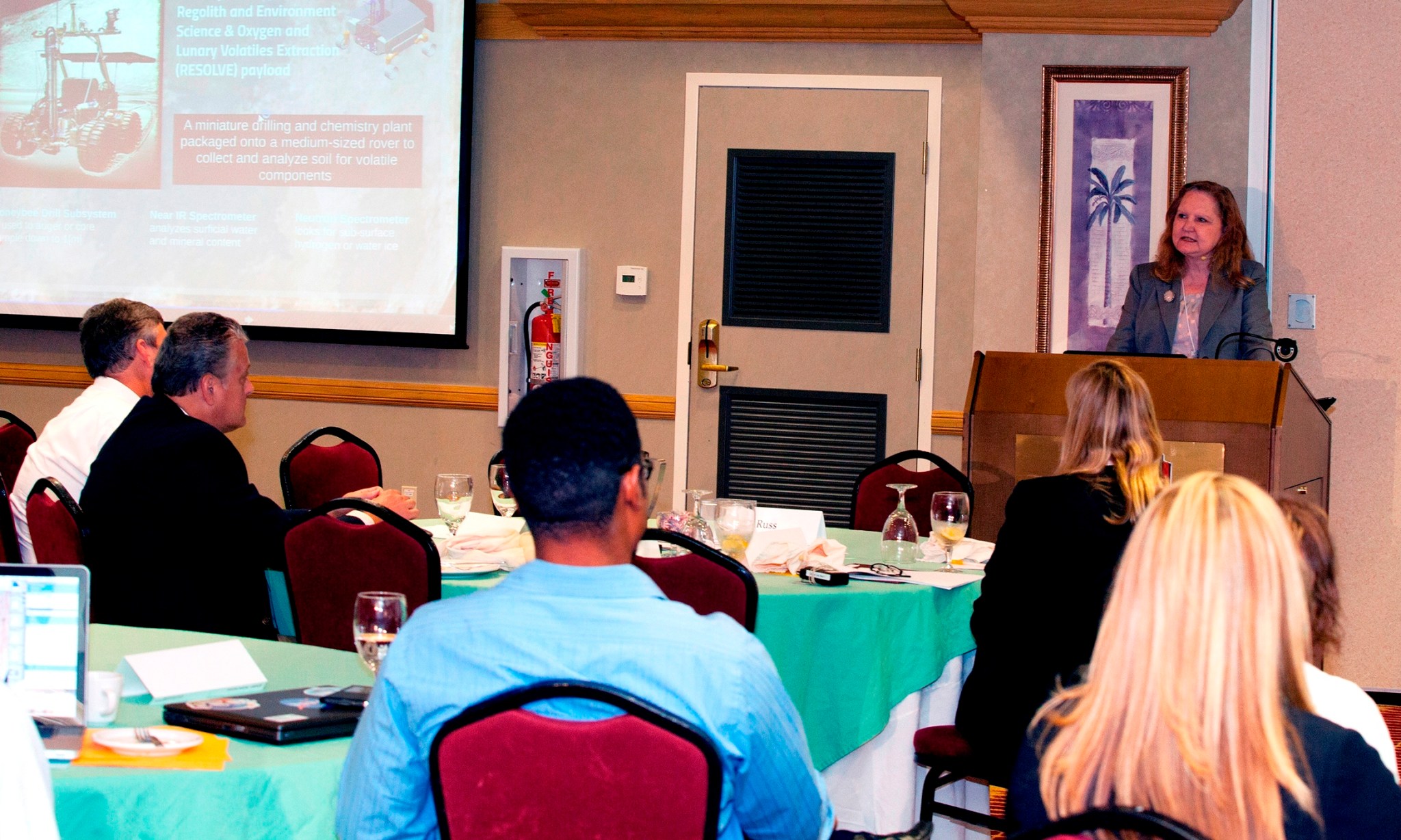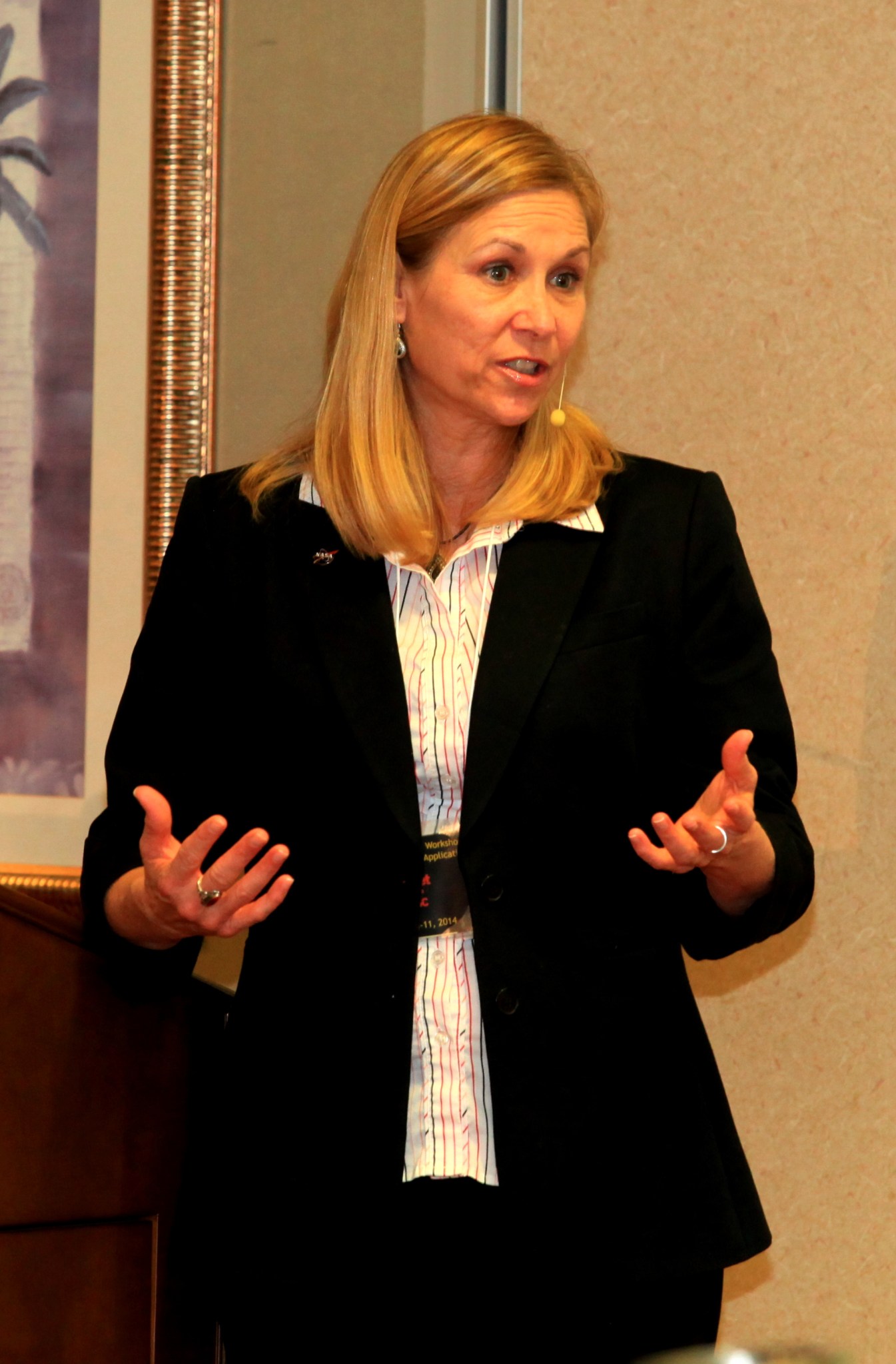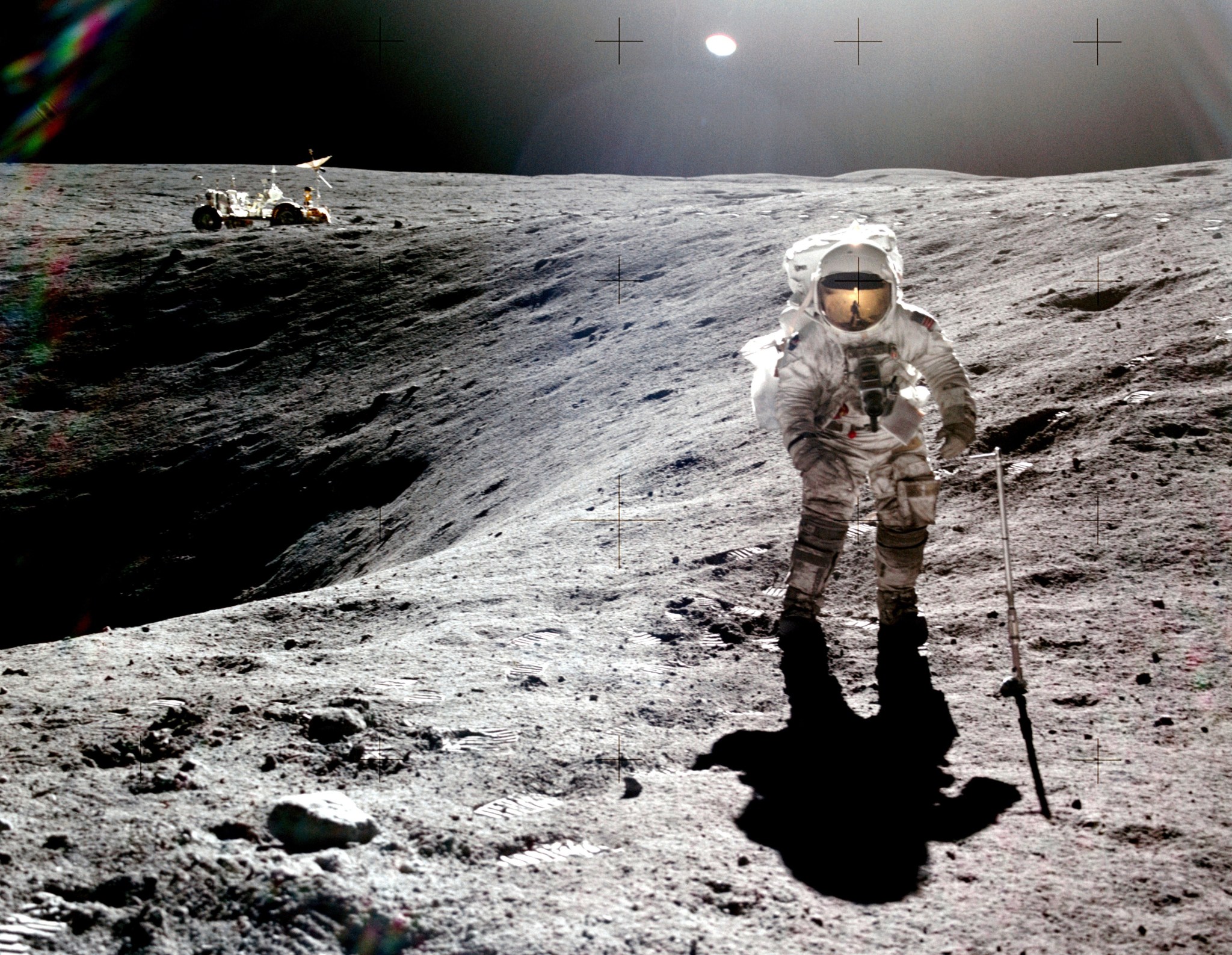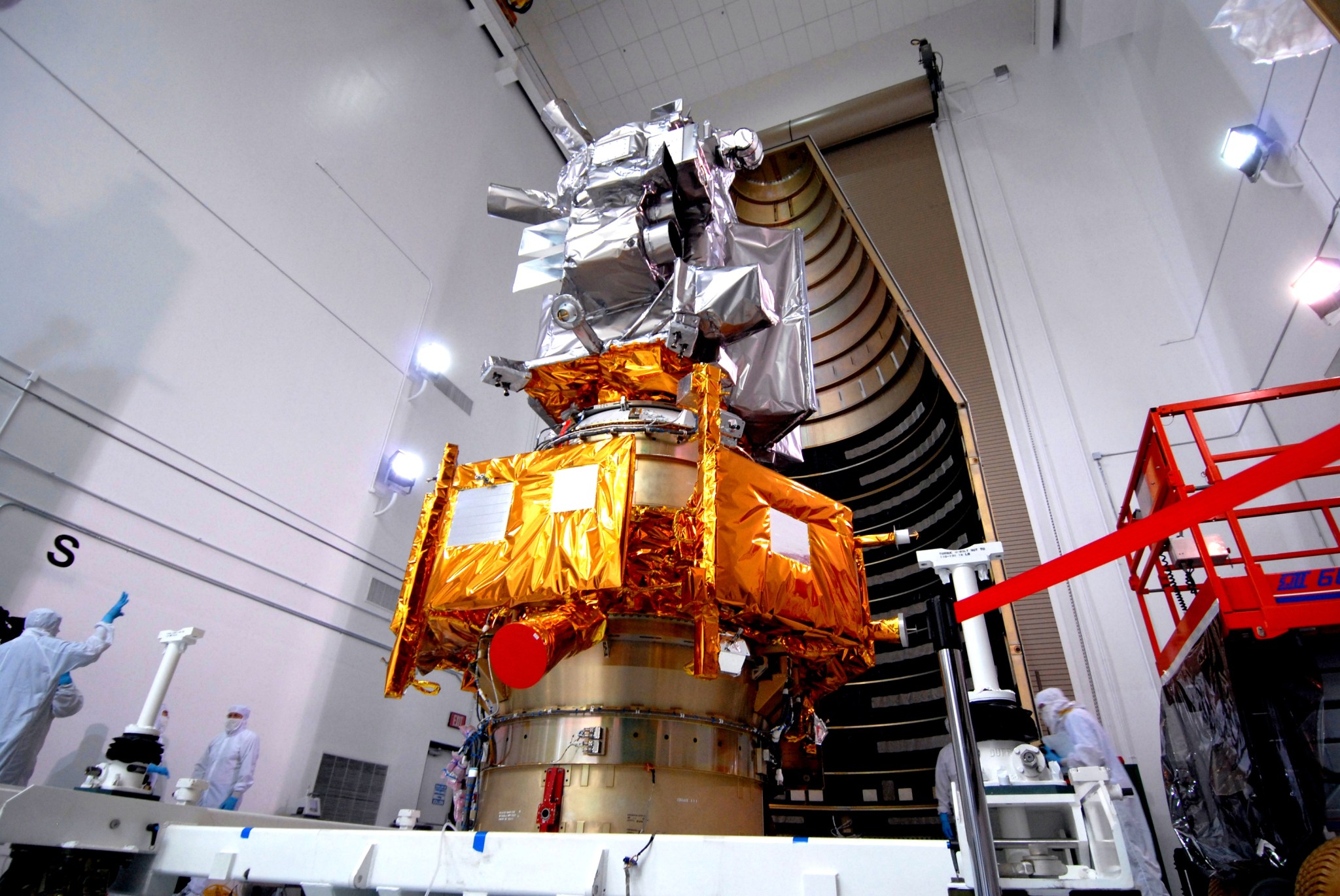The Earth’s nearest celestial neighbor, the moon, received frequent visitors during the 1960s and early 1970s culminating in six landings by humans during the Apollo Program. In recent years, numerous robotic orbiters and landers have returned to the moon, Mars and beyond, creating new interest in the technology needed for extraterrestrial exploration.
Scientists, engineers and entrepreneurs interested in research beyond Earth recently participated in the 4th International Workshop on Lunar Science and Technology Applications. Taking place in Cocoa Beach, Fla., April 8 through 11, the event was designed to foster collaborative work among those interested in solving the challenges of exploring the solar system.
Kennedy Space Center Deputy Director Janet Petro served as one of the final day’s keynote speakers, relating how NASA is leading the way in exploration beyond Earth.
“We’re continuing to build on our nation’s compelling scientific discoveries and achievements in space with science missions that will reach farther into our solar system, reveal unknown aspects of our universe and provide critical knowledge to all,” she said. “We can only do these things through partnerships, innovation and technology.”
Petro explained why she believes the United States remains a world leader in space exploration and scientific discovery.
“American ingenuity drives innovation, and our industry partners are helping create new transportation systems to reach low-Earth orbit and end our reliance on foreign launch providers,” she said. “NASA is also making critical investments in the cutting-edge technologies needed to execute the nation’s exploration and discovery goals, providing spinoff benefits to U.S. industry and Americans in their everyday lives.”
In the second keynote address, Kennedy’s chief technologist, Karen Thompson, related how NASA experts are already hard at work developing the technologies that will be needed over the next several decades to send humans to a range of destinations beyond low-Earth orbit, including asteroids, the moon and Mars.
Among the innovations is learning how to live off the land.
“We are developing technologies that will reduce the weight we launch as we travel to future destinations,” she said. “We need to concentrate on ways to reduce the cost of our launches and only carry the types of payloads we really need for our exploration goals.”
Called “in-situ resource utilization,” the concept involves relying on available resources that will enable more affordable extraterrestrial exploration and operations. This will minimize the amount of materials carried from
Earth. Advanced, autonomous devices could help astronauts benefit from available in-situ resources on the moon, Mars or other planets.
Thompson pointed out that results from the Lunar Reconnaissance Orbiter (LRO) and the Lunar Crater Observation and Sensing Satellite (LCROSS) have located potential resources just below the moon’s soil.
“Images from the moon have shown that water is about one meter below the surface,” she said. “One experiment we are developing (for future exploration), will drill down about one meter to look for water and minerals
that are near the surface.”
LRO was launched by NASA together with LCROSS on June 18, 2009, as part of the shared Lunar Precursor Robotic Program. The LRO is a NASA spacecraft currently orbiting the moon in a polar orbit, swooping as low as 31 miles above the surface. The data returned is providing detailed, three-dimensional maps that not only will identify safe landing sites, but also locate potential resources on the moon.
LCROSS was a NASA robotic spacecraft designed to determine the nature of hydrogen detected at the polar regions of the moon. The primary objective was to determine the presence of water ice in a permanently shadowed crater near a lunar polar region. It was successful in discovering water in a crater in the moon’s southern hemisphere.
One of the innovations currently being developed at Kennedy may help future explorers live off the land. That’s one of the projects scientists and engineers are studying at Kennedy’s Swamp Works. Established to provide rapid, innovative and cost effective exploration mission solutions, Swamp Works leverages partnerships across NASA, industry and academia.
“One of the interesting robots that the Swamp Works has been working on is called RASSOR, for Regolith Advanced Surface System Operations Robot,” Thom
pson said. “This robot is fashioned in a way to actually climb over very difficult terrain. It also has wheels with scoops that pick up regolith. It could be used to collect samples or excavate a landing pad for future landers.”
Regolith is a layer of loose material covering solid rock. It includes dust, soil, broken rock, and other related materials and is present on Earth, the moon, some asteroids and Mars.
Among other NASA presenters at the workshop was Jack Fox, technical assistant for Kennedy Engineering and Technology’s Four Lines of Business, who chaired a session on Lunar Surface Activities.
As part of that session, Adam Swanger, a cryogenic engineer in the NASA Fluids Test and Technology Development Branch, discussed characterizing low-temperature regolith properties. Drew Smith, a robotics engineer in the Surface Systems Office, presented information on efforts to reduce extraterrestrial excavation forces. Dr. Paul Hintze, a chemist in the Chemistry Branch of the Materials Science Division, spoke on construction on the moon. Dr. James Mantovani, a physicist in the Surface Systems Office, discussed lunar manufacturing.
In a later session, Greg Clements, chief of Kennedy’s Control and Data Systems Division, chaired an overview of Small Payload Integrated Testing Services. SPLITS is an affordable method of research focusing on three classes of small satellites, from less than 1 kilogram (about 2.2 pounds) in mass to 100 kilograms (about 220 pounds) in weight.
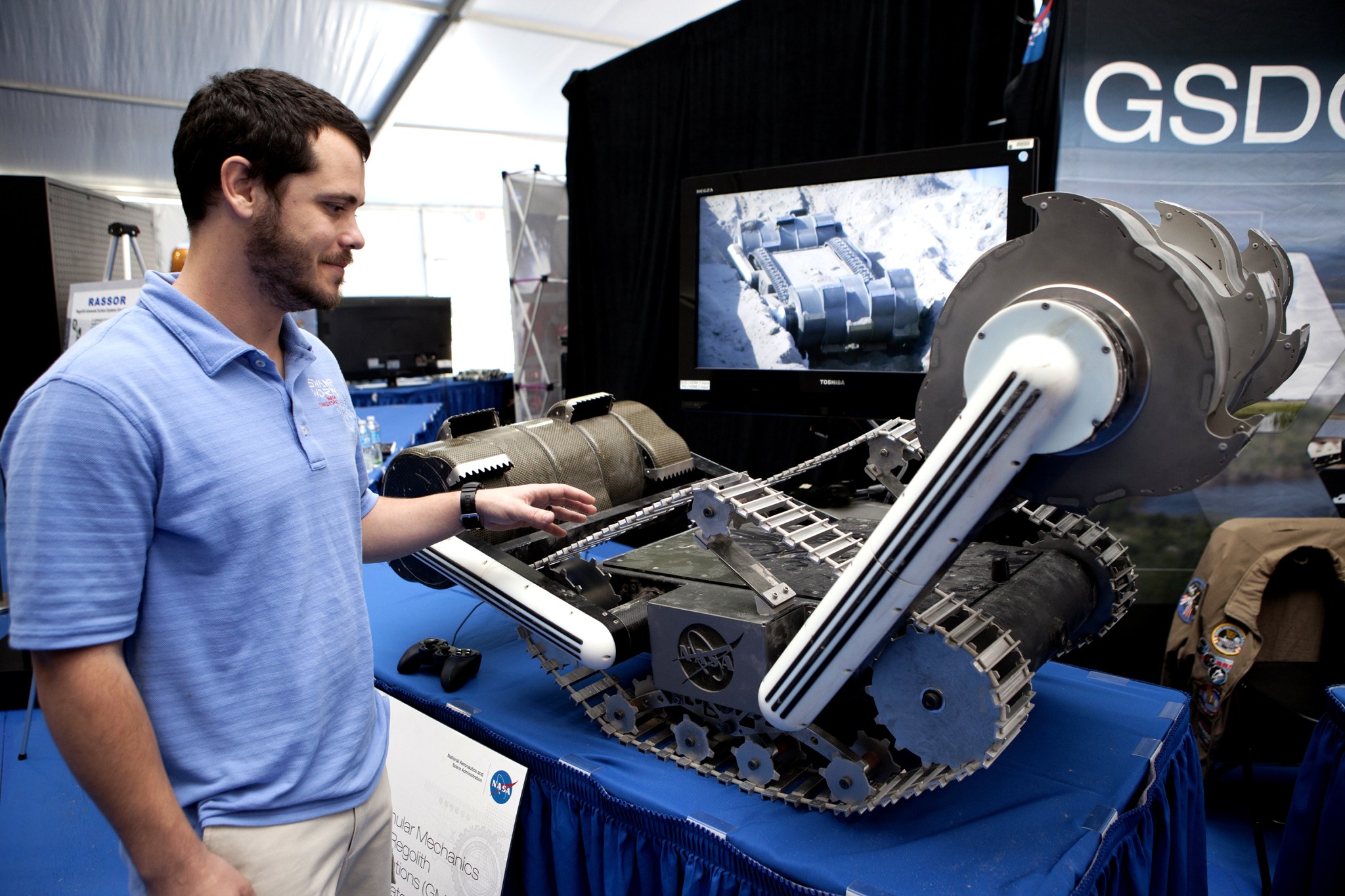
Participants in the SPLITS discussions included Jared Berg, of the Engineering Design Analysis Branch, who discussed CubeSat initiatives at Kennedy and Angela Balles, of the Materials Science Division, who spoke on lab infrastructure in support of SPLITS. Nicole Dawkins of Aerospace Flight Systems in the Kennedy Chief Engineers Office, made a presentation on Rocket University. As part of Rocket University, engineers are given an opportunity to work a fast-track project to develop skills in flight systems through the life cycle of a program.
Sponsored by Flexure Engineering of College Park, Md., the workshop was designed to bring together researchers with an interest in the latest discoveries and opportunities in lunar and planetary science. Flexure Engineering provides the aerospace, defense and scientific communities with unique engineering services and testing products.



























